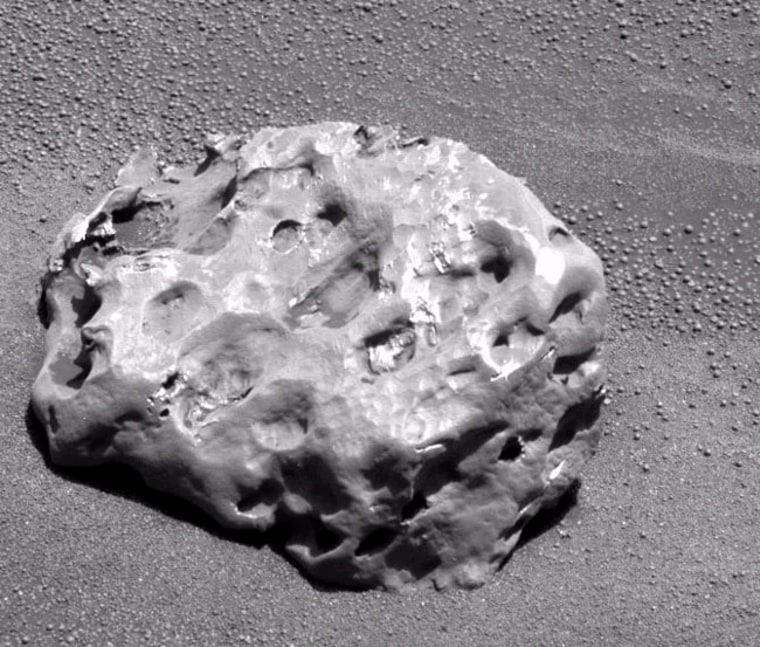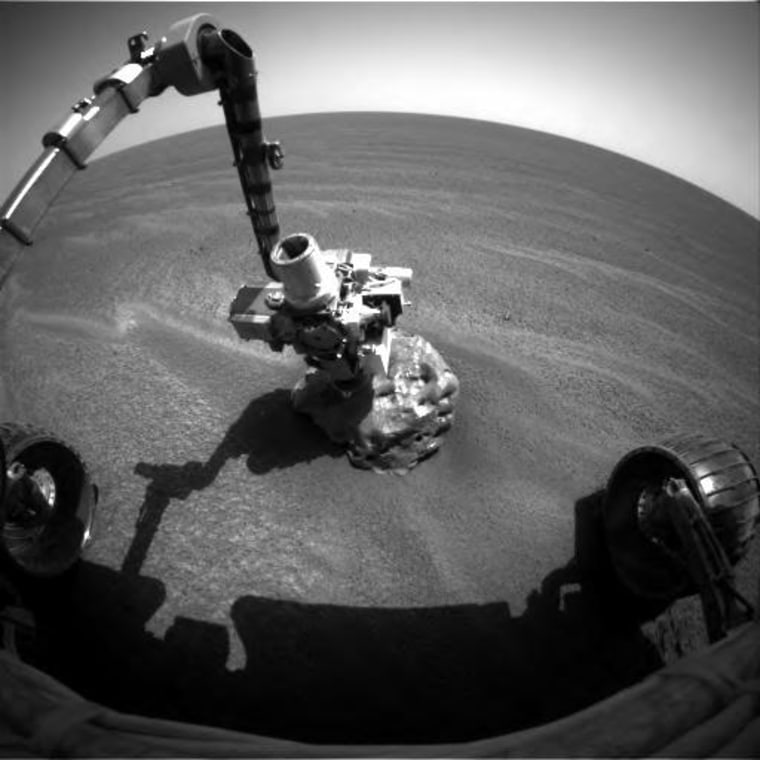In a stroke of luck, the NASA rover Opportunity has discovered a basketball-size metal meteorite sitting on the surface of Mars, the mission’s main scientist said Tuesday.
Scientists believe the meteorite might lead to clues about how martian winds are reshaping the planet’s surface.
Opportunity came upon the meteorite last week while performing other tasks. Tests confirmed it was a nickel-iron meteorite, said Steve Squyres, a Cornell University scientist who is the principal investigator for NASA’s Mars Exploration Rovers mission.
“I didn’t see this one coming,” Squyres said. “I try very hard to anticipate the things that we might find and the things we might need to know, and be prepared for things, but an iron meteorite was not something that I was expecting.”
Scientists are not so much interested in the meteorite itself. Rather, they want to see if other objects spotted out on the Meridiani plains are also meteorites and what that might tell them about Mars.
If sand is continually blowing in and being deposited on the surface, burying things and building up terrain over time, meteorites will be covered and few will be seen, Squyres said.
But if fine surface material is being continuously stripped away by the wind, coarse things like meteorites will be left behind and their accumulation will show.
“So whether you’re seeing a net accumulation or a net burial of the meteorites is going to tell you something about what the erosion or deposition rates are out on the plains,” Squyres said.

Opportunity landed Jan. 24 on the Meridiani plains, halfway around the planet from where its twin, Spirit, set down in the Gusev Crater region on Jan. 3, 2004.
Opportunity, a six-wheeled robot geologist, quickly discovered rocks showing that its area of Meridiani was once soaked in water, the major scientific finding of the twin-rover mission. After that it explored rocks in a deep crater and then went to conduct an engineering study of its heat shield, which was jettisoned before landing.
The meteorite was sitting nearby.
“I’ve actually told the team that we probably shouldn’t linger here long because this is obviously the place at Meridiani Planum where large metal objects fall from the sky,” Squyres joked.
During the weekend, the rover drove to the meteorite and deployed its instrument arm to confirm its composition.
